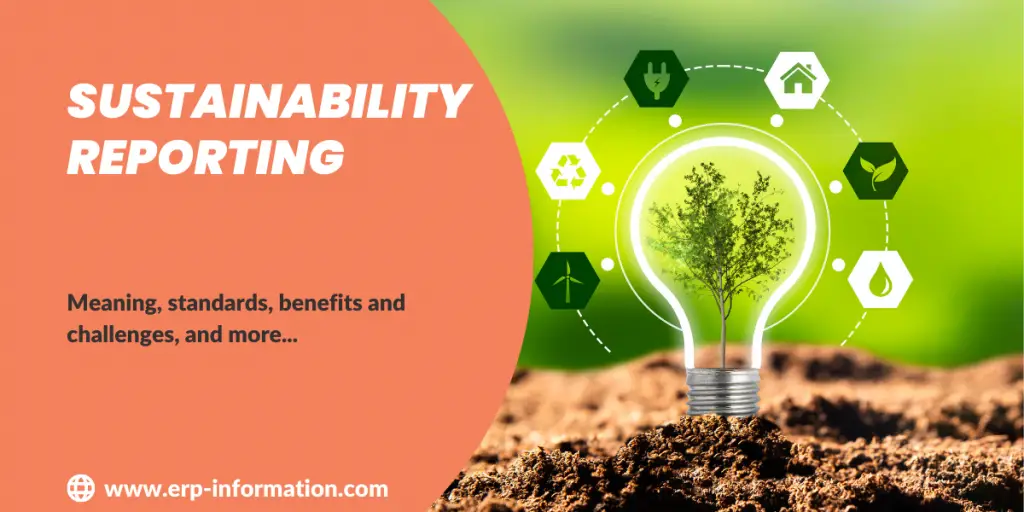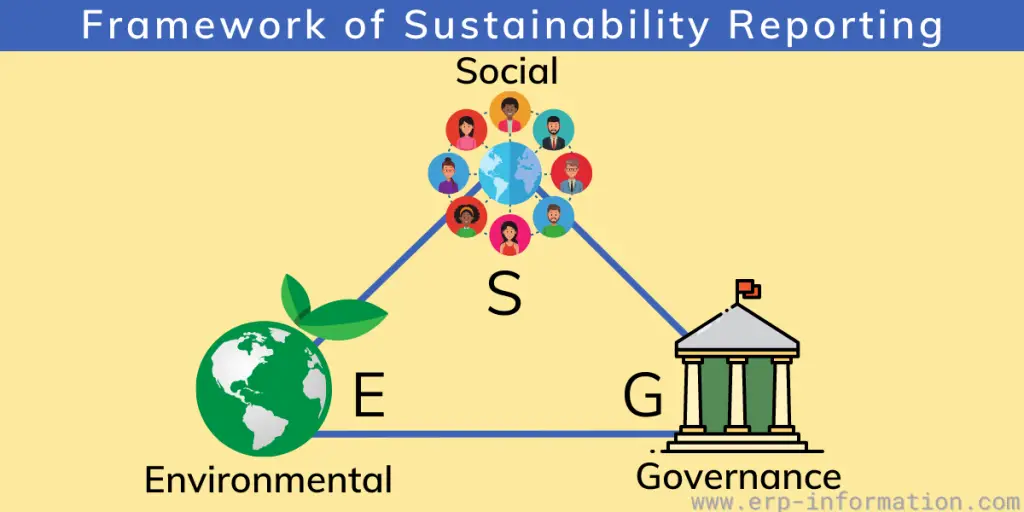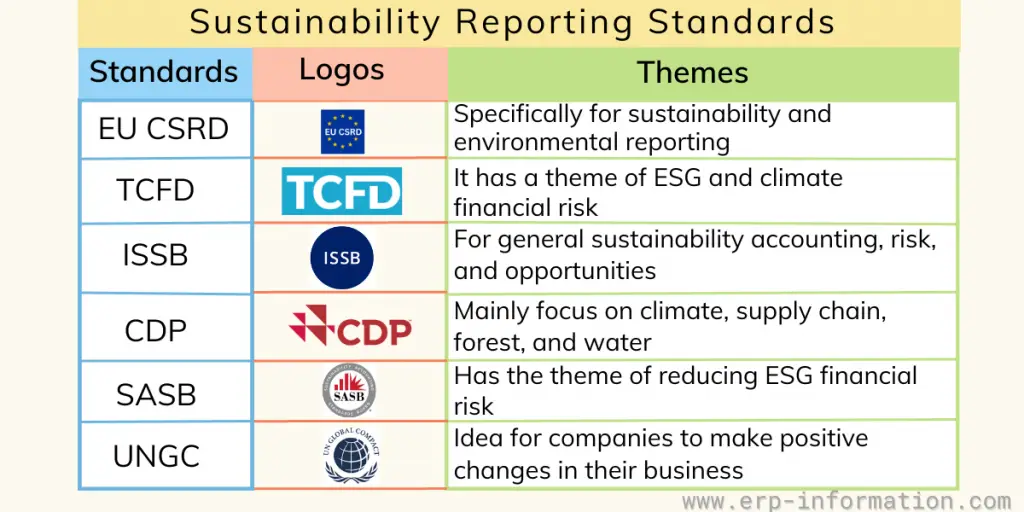Every company needs to maintain things like communication, performance, and reports. To ensure these records stay safe and available, companies must have a good way of keeping track of them. So here comes sustainability reporting.
This blog post comprehensively provides details on sustainability reporting, its benefits, challenges, and sustainability standards.
Meaning and Framework of Sustainability Reporting
Sustainable reporting is a report that discloses the Social and ESG goals and Environmental communication. That means publishing non-financial information in a well-mannered way that can be easily understandable. This is to increase corporate transparency and effective business engagement.
Companies worldwide are starting to share information about how they care for the environment. This type of information is called sustainability reporting.
The Global Reporting Initiative Standards is a popular way for companies to do this reporting. It relates to other non-financial reporting forms like triple bottom line and Corporate Social Responsibility (CSR) reporting.
Businesses and governments need people to trust them to have a healthy economy. Every day, organizations make decisions affecting the people involved, like banks, labor groups, citizens, and more.
Their decisions are based not just on money but also on risks and opportunities in the short-term and long term. This sustainability reporting helps analyze the risk and make decisions.
Sustainability Report Format
It has no specific format but should involve companies’ social and environmental responsibility and ESG goals. It should have complete communication of how the company is progressing, what its efforts are to reach the goal, how it impacts the progress, etc.
What do Sustainability Reports Contain?
The reports contain how companies are protecting the environment. Depending on where the company is, there could be different rules. However, the report should follow certain standards like GRI or SASB so that all of the information is accurate and true.
Sustainability Reporting Standards
Organizations need to decide which sustainability reporting standards and frameworks they will use. It is good to do a few things well than try to do everything. Start with some established standards, ones other businesses have used before you.
These standards can help your organization set goals, know what is important, measure progress, prepare for risks, and make necessary changes.
Below we are providing a list of sustainability reporting standards.
EU CSRD (ESRS)
This standard is specifically for sustainability and environmental reporting
The European Union (E.U.) has a Corporate Sustainability Reporting Directive (CSRD). It updates the Non-Financial Reporting Directive (NFRD). The CSRD wants to make sure that companies report on Sustainability in a standard way, as they do with financial reports.
TCFD (Task Force on Climate-related Financial Disclosures)
TCFD has a theme of ESG and climate financial risk
For example, The Task Force on Climate-related Financial Disclosures helps companies inform investors and other people about the risks of climate change. This is important for finance, banking, insurance, and other businesses. The U.S., U.K., Singapore, and other governments support this effort.
ISSB (IFRS)
IFRS for general sustainability accounting, risk, and opportunities
In 2022, the International Sustainability Standards Board (ISSB) created the IFRS Sustainability Disclosure Standards.
This was to help people like CFOs, and investors get sustainability information in a global format. The IFRS is important in financial reporting, so these standards will help connect sustainability and climate data with financial statements.
CDP (Carbon Disclosure Project)
CDP standards mainly focus on climate, supply chain, forest, and water
CDP helps companies tell people about their environmental impact. More than 9,600 companies use CDP’s system. Companies can answer questions about climate change, forests, and water security. They can also choose to answer questions about their supply chain if they want to. Then, CDP puts the results of these answers on its website for everyone to see.
SASB (Sustainability Accounting Standards Board)
This reporting standard has the theme of reducing ESG financial risk
The Sustainability Accounting Standards Board (SASB) makes standards to help companies tell investors about their business’s environmental, social, and corporate governance performance. They measure important financial info that could influence an investor’s decision.
UNGC (United Nations Global Compact)
The U.N. Global Compact is an idea for companies to make positive changes in their business. Since 2000, over 9000 companies from 159 countries have joined and shared their work.
Benefits of Sustainability Reporting
- A sustainability report is more useful for easily understanding the opportunities and risks.
- Companies can get good recognition.
- It is helpful to boost the employees.
- It increases the business ability.
- It enhances the operating ability and reduces the risk of environmental failures.
Challenges of Sustainability Reporting
- Reporting is time-consuming for small companies.
- Need a trained or educated person to collect the data.
- A lack of understanding in the organization may cause damage.
- Reporting may suffer from overloaded data.
- Chances of having low-quality data.
- It is difficult to report constantly changing information about environmental impact and changes.
- Data management and meaningful reporting are difficult tasks for all kinds of organizations.
FAQS
What are the main areas of sustainable reporting?
The three main areas of sustainable reporting are Environmental, Economic, and Social responsible.
Why is sustainability reporting difficult?
Sustainability reporting is difficult because it’s hard for organizations to keep track of information, such as how much air pollution is there. Metrics are numbers that tell us about things in the environment. But, of course, these numbers change as we learn more.
What are the social indicators for sustainability reporting?
GRI and other sustainability standards have guidelines for measuring a company’s social performance. This includes how people are treated at work, human rights, and responsibility for products made. Companies can also track social value compacts, impact assessments, and monitoring to ensure they meet their goals.
Conclusion
As we have discussed, sustainable reporting is becoming increasingly important. This is a better way to ensure that companies are transparent and responsible for their actions.
Moreover, sustainable reporting can lower risks while increasing profits in the long run – creating a win-win situation! Therefore, companies should embrace sustainability reporting and use it to impact their operations while considering their wider social responsibilities positively.
We hope this article is beneficial for you to understand sustainable reporting, sustainable reporting standards, its benefits, and challenges.


